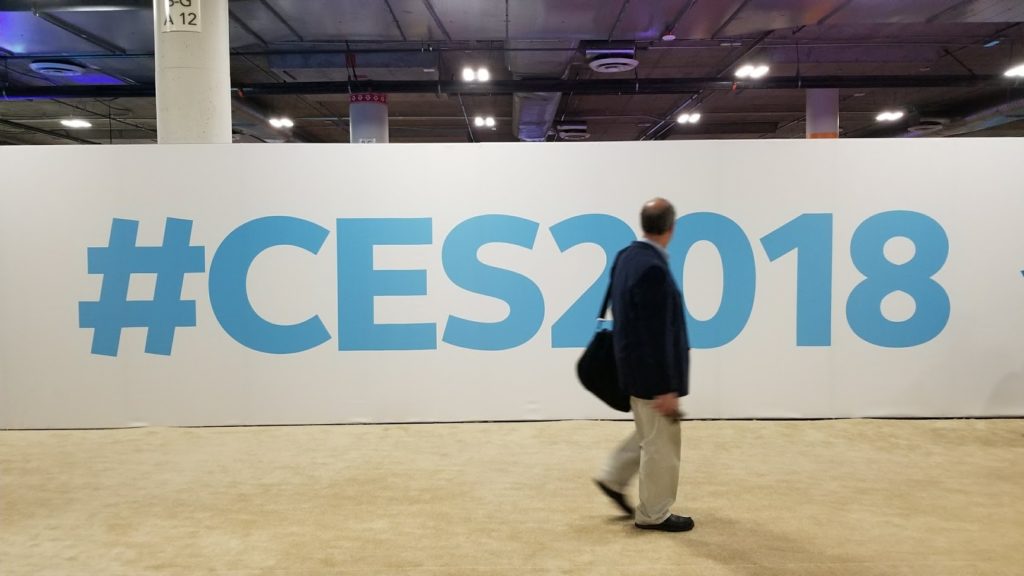 We’re back from Las Vegas, pumped up and inspired by what we experienced. This year, four of us attended – Paul Jacobs, Seth Resler, Bob Kernen, and me – in an effort to try to take in this bigger-than-life show. From the south, central, and north halls of the Las Vegas Convention Center (and its massive parking lot where the Google and Android exhibits were housed) to C Space at the Aria, and Eureka Park at the Sands, we covered a lot of ground, walked thousands of steps (I’ve got the data to prove it), and witnessed some amazing things.
We’re back from Las Vegas, pumped up and inspired by what we experienced. This year, four of us attended – Paul Jacobs, Seth Resler, Bob Kernen, and me – in an effort to try to take in this bigger-than-life show. From the south, central, and north halls of the Las Vegas Convention Center (and its massive parking lot where the Google and Android exhibits were housed) to C Space at the Aria, and Eureka Park at the Sands, we covered a lot of ground, walked thousands of steps (I’ve got the data to prove it), and witnessed some amazing things.
The show’s attendance continues to grow in spite of Las Vegas straining at the edges to contain this runaway train. You can easily see the trajectory on this simple chart. This year’s attendance is expected to break last year’s record. You have to wonder how much more CES can grow.
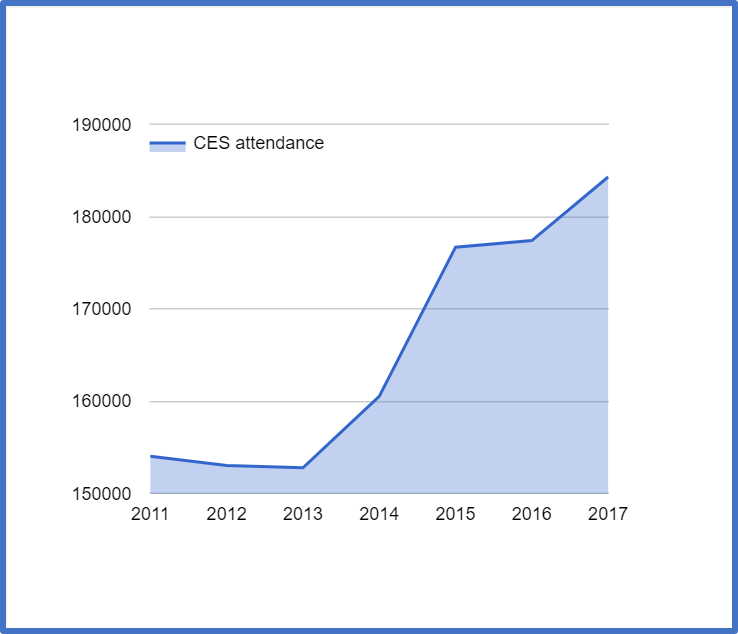 By the numbers, CES 2018 was mind-boggling:
By the numbers, CES 2018 was mind-boggling:
- More than 3,900 exhibitors
- More than 2.75 million net square feet of exhibit space
- More than 900 startups at Eureka Park
- More than 860,000 tweets about CES 2018
- More than 450,000 uses of the #CES2018 hashtag
The social side of CES is an interesting one. At C Space, I ran into a company called Buzz Radar, the self-described “Official CES Social Media Command Center.” Their software aggregates all social input about the event to produce compelling reports about attendees and what they’re socially saying. The chart below caught my eye – it tallied up the most talked about brands at CES. And while it doesn’t reflect the event’s final totals, there are some insights in this data:
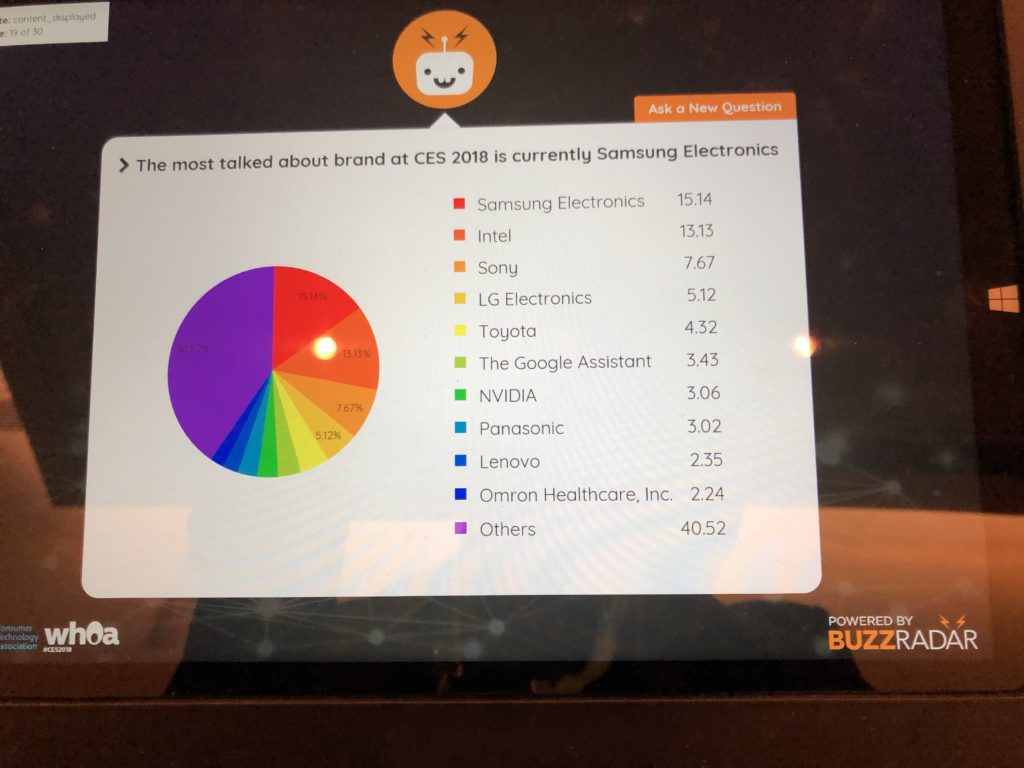 The top four mega-brands on the chart also have some of the biggest and most elaborate displays – year after year. Toyota usually goes all-out for CES, and this year was no exception. The automaker had some amazing concept vehicles at their exhibit. Their fifth-ranked showing underscores how cars have become a mega-attraction at CES.
The top four mega-brands on the chart also have some of the biggest and most elaborate displays – year after year. Toyota usually goes all-out for CES, and this year was no exception. The automaker had some amazing concept vehicles at their exhibit. Their fifth-ranked showing underscores how cars have become a mega-attraction at CES.
But the Google Assistant in sixth place was a surprise. Note that it’s not Google, the company, but instead it’s their smart speaker entry. Every other position on the ranker is a company, but Google’s is a device. How is that possible? More on that later in this post.
As has been the case over the past several years, we scheduled a breakfast with the iconic Jerry Lee, my CES Yoda. For Paul and me, it was our 10th consecutive CES. For Jerry, it was his 52nd. As he explained to me a couple of conferences ago,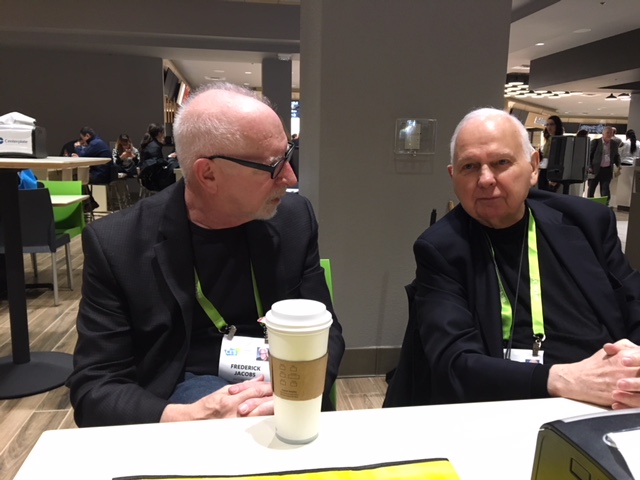
“I don’t want to miss the future.”
And that’s what keeps us coming back every year. CES is challenging, expensive, and a tough way to spend early January. But it’s an important part of my continuing adult education, and the radio execs we brought with us this year agreed.
I asked Jerry his impressions of CES 2018. And without a pause he told me:
“For the next 5 years, CES is going to go up, up, up.”
And Jerry wasn’t speaking about attendance. He has an instinctive feel for these shows having attended so many of them. Jerry is clearly looking at how technology trends are firming up and taking off, having an impact on every aspect of the business world and society in general – including radio.
It’s hard to disagree because this was a great show, and it’s no longer just about the gadgetry. Yes, there were smartphones, drones, virtual reality headsets, robots, and paper thin TVs. But the lessons from CES 2018 are more about the integration and interconnectivity of all this technology, powered by the ease of voice, and the growing brains of artificial intelligence.
It was less about dashboard touchscreens, and more about the car as a portal – a rolling, multi-dimensional connected device that communicates with other vehicles, traffic lights, and highways to provide a safer, seamless driving experience. I had lunch with a wise auto exec and asked him what would reach critical mass first – autonomous driving or electric vehicles. His answer?
Yes!
As was the case last year, there are more cars at CES than any other device. But they are now joined by motorcycles, scooters, bikes, semis, RVs, and just about anything else on wheels that can be electrified. The “smart cities” movement took flight this year at CES 2018, led by Ford and a powerful keynote from their new CEO Jim Hackett. He referred to Ford as a “mobility company” – and not a car company. And while Ford will continue to make Fusions, F150s, and MKZs, they are heavily focused on a more expansive idea of what it will mean to go from Point A to Point B.
Along with scores of other companies, billions are now being invested in projects, experiments, and initiatives that will change more than just dashboards. Everyone from insurance companies to retail businesses to American workplaces will be affected by this transportation revolution. CES framed up what mobility may look and feel like, especially in urban areas where everyone will be moving more safely and efficiently. It’s a very different world than the one we’ve experienced all our lives.
The radio executives on our Jacobs CEO/CES Tour took note of these changes because they will most definitely impact the radio industry, and how consumers will access radio in a future we’re careening toward faster than most of us think. And so did the NAB. They participated in the GENIVI Alliance’s big CES showcase, dominating a couple of ballrooms at the Bellagio with a bigger-than-life car dashboard displaying “WNAB” and playing a great music mix, supported by a strong HD Radio display with album art. GENIVI is a global automotive consortium, and their annual event at CES is attended by hundreds of the movers and shakers in the world of cars. Radio looked and sounded good.
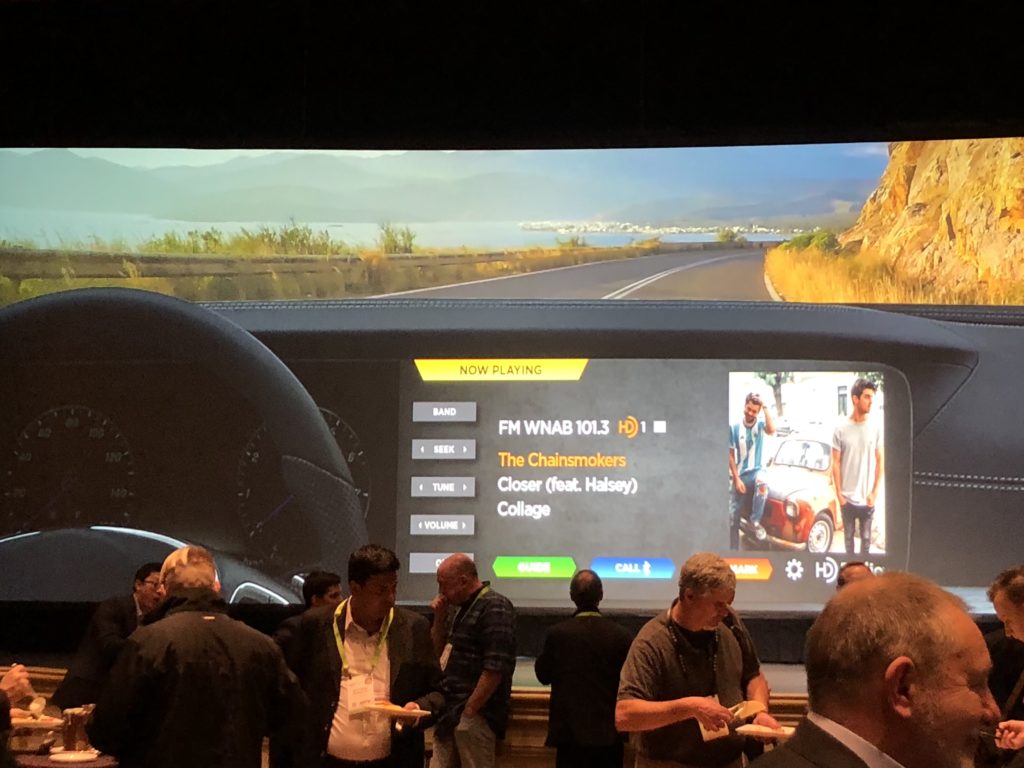 Earlier on, I mentioned voice and the starring role it played at CES 2018. Like last year, the voice of Alexa was embedded in myriad gadgets and platforms. But this year, Google jumped in with both feet, and you can see the result of their efforts on the Buzz Radar ranker.
Earlier on, I mentioned voice and the starring role it played at CES 2018. Like last year, the voice of Alexa was embedded in myriad gadgets and platforms. But this year, Google jumped in with both feet, and you can see the result of their efforts on the Buzz Radar ranker.
While not the main event, the Google vs. Amazon war was the much-talked-about undercard of CES. And it was a street fight that radio pros immediately recognized as an all-out visibility war.
Hubbard’s Greg Strassell aptly referred to the two giants going at each other full-strength as Godzilla vs. Kong. And at CES 2018 at least, Godzilla – or Google – came way out on top.
As it turned out, the first two stops on our tour were Google and Amazon, both located near one another in the huge parking lot in front of the convention center.
Google is well behind Amazon in overall smart speaker penetration, and so they showed CES what going all-out looked like. They wrapped 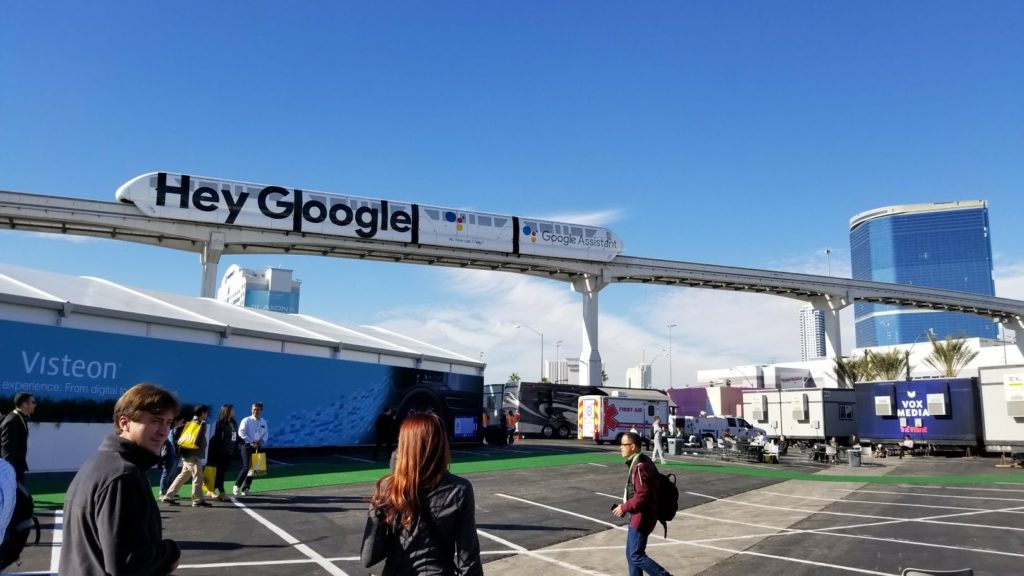 the monorail, built a two-story Café, had scores of human “Google Assistants” running around the event sporting unique jump suits, while buying up seemingly every hotel marquis and blaring “Hey, Google.”
the monorail, built a two-story Café, had scores of human “Google Assistants” running around the event sporting unique jump suits, while buying up seemingly every hotel marquis and blaring “Hey, Google.”
Amazon, on the other hand, showed up with a poorly marked Airstream trailer, equipped with the latest Alexa inspired products.
Not close.
And while Apple’s HomePod wasn’t even released in time for CES (and Apple likely wouldn’t have shown up in Vegas anyway), tech visionary and former Chief Economist for the CTA, Shawn DuBravac, reminded our attendees that it’s still early days in the smart speaker race. And while Amazon and Google are currently #1 and #2, the pecking order might indeed include Apple or even someone else. In fact, that’s what happened with smartphones. They were around for years – and then iPhone debuted and redefined and rocked the category.
That’s why we keep showing up for CES. And why more radio professionals are reworking their January itineraries to include it in their Q1 plans.
We don’t just want to see the future.
We want to make sure we’re a part of it.
We’re hosting a free webinar – “10 Takeaways From CES 2018 (That Will Impact Radio)” – with Inside Radio on Thursday, January 25th at 2pm ET. You can register for it here.
- How Radio Can Create Its Own “TUDUMS” - February 4, 2025
- What’s Your Radio Station’s “TUDUM?” - February 3, 2025
- Appreciating What We Have (When Our Lives Aren’t In Jeopardy) - January 30, 2025



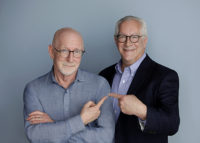
Excellent, as always! Thank you.
Appreciate it, Clark.